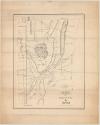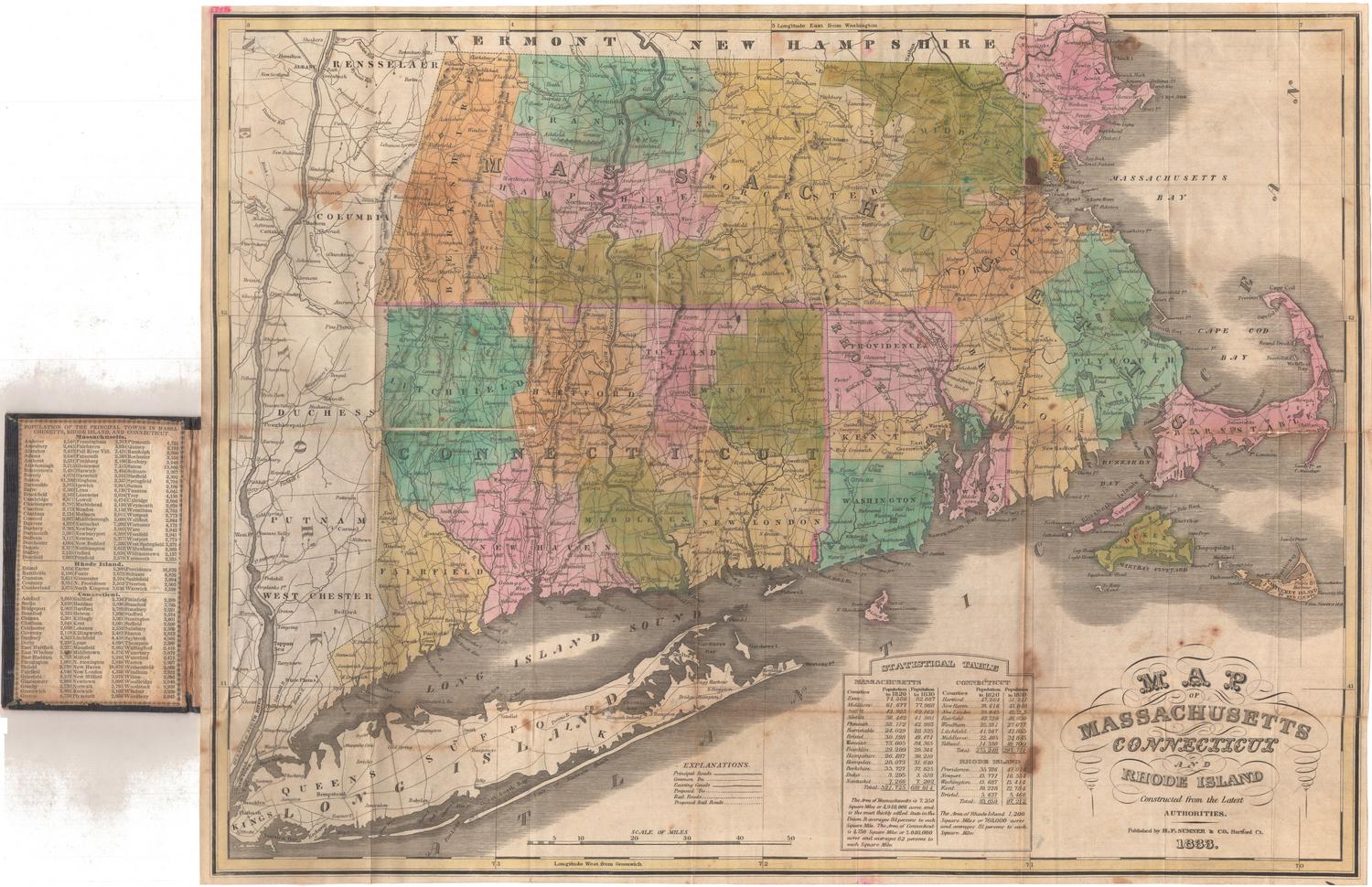Map of Farmington & Avon
PrinterPrinted by
Stodart & Currier
(1834 - 1835)
Date1835
MediumLithography; black printer's ink on wove paper
DimensionsPrimary Dimensions (image height x width): 18 3/8 x 13 3/4in. (46.7 x 34.9cm)
Sheet (height x width): 23 7/8 x 19 1/8in. (60.6 x 48.6cm)
ClassificationsGraphics
Credit LineConnecticut Museum of Culture and History collection
Object number2012.312.35
DescriptionMap of Farmington and Avon, Connecticut, extending from the town lines of Canton and Simsbury to the north, Windsor and Hartford to the east, Southington and Berlin to the south, and Bristol and Burlington to the west. Woods, swamps, banks and rivers are delineated and labeled, and elevation is conveyed with hachure marks. On the left side, the map has been divided into 21 numbered rows, for which no explanation is provided. Around the area called "Pine Woods," there are nine lines dividing that section into unnumbered columns, and again, there is no explanation. Roads are marked but not labeled. The Farmington Canal (labeled "Canal") runs from lower left to upper center, with a separate "Feeder" serving Unionville (called "Union' on the map). The location of the Farmington Aqueduct is indicated. Dwellings are marked but the ones in what is the center of town in Farmington are not labeled, while many of the landmarks, including churches, farms and houses, on the outskirts of town are identified with a name.
Label TextFarmington, established in 1645, was once one of the largest towns in Connecticut, second only to New Haven. Seven surrounding towns were created from what once was its territory. Avon, originally known as Northington or Nod, grew up rapidly around the Farmington Canal and became a separate town in 1830. It was one of the last towns to be formed. Plainville, which also profited from the canal, obtained its own post office in 1829, but was still part of the the town of Farmington in 1835, when this map was made. Plainville finally achieved independent town status in 1869.
NotesCartographic Note: Scale: 1 inch equals 50 chains; 120 chains = 1 mileConstituent Note: The Currier who was a partner in the firm of Stodart & Currier which printed this map is the same Nathaniel Currier who later became a partner of James Merritt Ives. Currier & Ives (1857-1907) were the most famous American lithographers of the nineteenth century.
Status
Not on view













